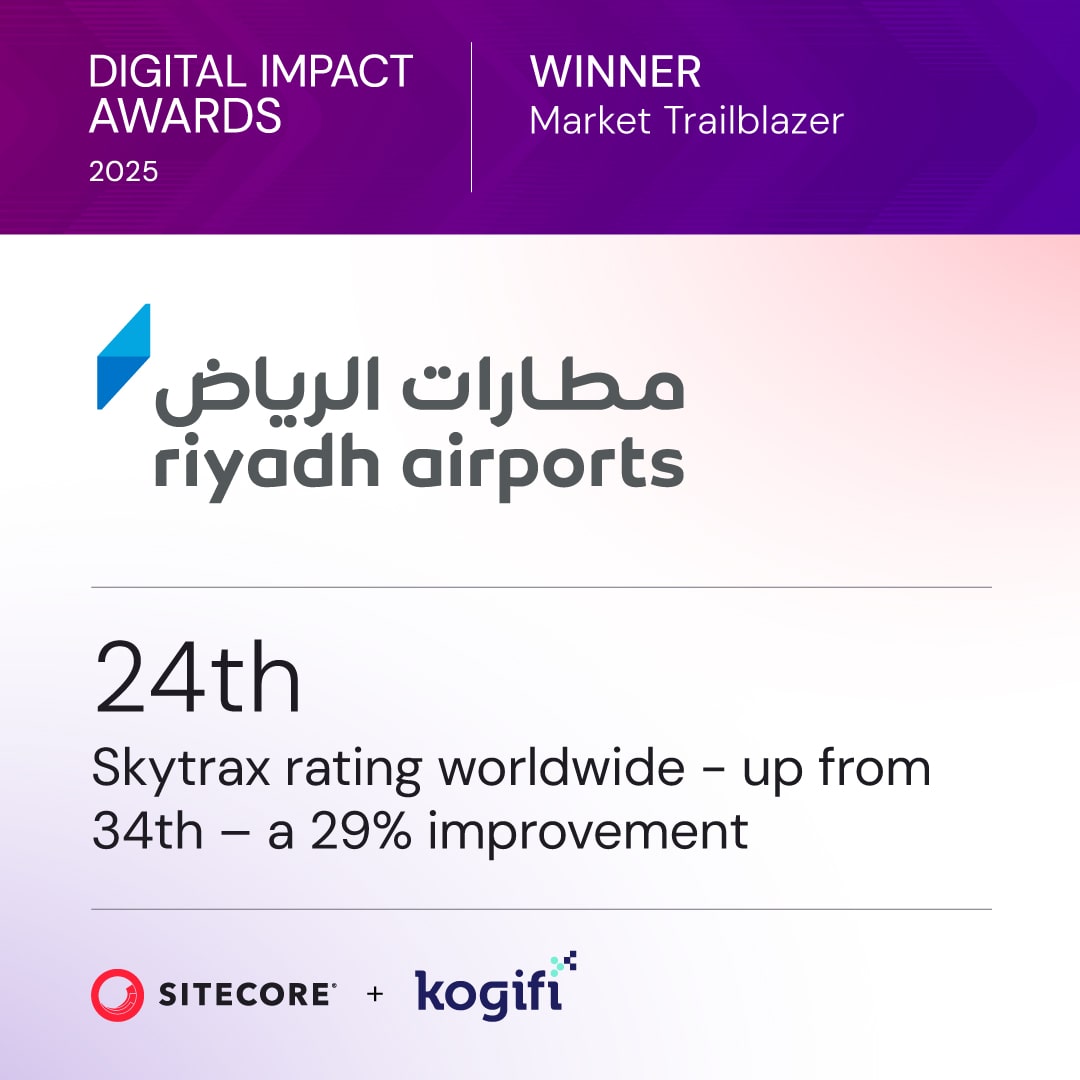Producing videos at scale for large organizations can be challenging, but a structured workflow can simplify the process. From internal communications to marketing, video content is a core tool for engaging audiences and achieving business goals. However, common challenges like interdepartmental bottlenecks, compliance issues, and resource constraints often arise. Here's how to tackle them:
- Define Goals & Audience: Start with clear objectives and target audience insights to shape your video's message.
- Assign Roles & Plan Resources: Designate specific responsibilities (e.g., project manager, creative lead) and allocate budgets effectively.
- Standardize Processes: Use templates, naming conventions, and project management tools to maintain consistency and efficiency.
- Leverage Technology: Adopt enterprise platforms for centralized asset management and automated workflows.
- Track Performance: Use metrics like production timelines and engagement rates to refine processes over time.
Mastering the Art of Corporate Video Production: 5 Phases to Success
Pre-Production Planning and Strategy
Pre-production is the backbone of successful enterprise video production. It lays the groundwork to ensure your project stays within budget, meets deadlines, and delivers the desired results. Without solid planning, even the most skilled production teams can struggle to create videos that align with business goals. This phase is all about defining clear objectives, assigning roles, and planning resources to guide every step of the project.
Setting Goals and Identifying Target Audience
Start by defining clear, measurable objectives for your video that align with your broader business strategies. Who is your target audience? Dive deeper than basic demographics - explore their expectations, motivations, and preferred platforms. Use tools like forums, reviews, and support tickets to understand their pain points and communication styles. Are they searching for information, feeling overwhelmed, or just curious? Knowing this helps shape your messaging.
At the heart of your video’s strategy is its core message. Ask yourself: If viewers could only take away one sentence from this video, what would it be? Make sure everyone on your team can clearly articulate this takeaway.
Set SMART goals - Specific, Measurable, Achievable, Realistic, and Timely. For example, instead of saying, "We want to increase brand awareness", aim for something tangible like driving 1,000 qualified viewers to your product landing page within two weeks of launch. Also, think about distribution channels early on. Whether your video is destined for Instagram, YouTube, or internal presentations, the platform will impact creative decisions like video length, aspect ratio, and tone.
Team Roles and Responsibilities
Defining team roles early prevents confusion and ensures accountability throughout the project.
- Project Manager: Acts as the central hub, coordinating timelines, facilitating communication, and ensuring deliverables meet expectations.
- Creative Director: Translates business goals into visual concepts, develops creative briefs, and ensures the project aligns with brand standards.
- Technical Crew Leader: Handles equipment needs, location logistics, and identifies potential technical challenges ahead of time.
- Content Strategist: Focuses on messaging, ensuring the script and storyboard align with the target audience and broader marketing campaigns.
- Compliance and Legal Representatives: Review content for regulatory requirements, accessibility standards, and brand adherence.
Assign specific duties, deadlines, and approval processes to keep the project moving smoothly. When everyone knows their role and responsibilities, it minimizes delays and ensures all stakeholders are on the same page.
Scheduling and Budget Planning for Enterprise Teams
Enterprise video projects require careful coordination of resources across teams, vendors, and equipment. Effective scheduling and budgeting are essential to keep things on track.
Budget planning should cover all costs - both direct and indirect. This includes equipment, crew, software, and even the time needed for stakeholder reviews. Don’t forget to include contingency funds for unexpected expenses, and document all decisions in a centralized system accessible to the team.
When creating a timeline, it’s often helpful to work backward from the desired launch date. Build in time for approvals, revisions, and any technical requirements. Adding buffer time is crucial, especially for projects that involve lengthy approval processes.
Use enterprise project management tools to monitor resource allocation and flag potential scheduling conflicts early. These tools help ensure that during production, decisions can always refer back to the original plan.
With a strong pre-production strategy, enterprise teams can transition smoothly into the production phase, confident in their ability to execute efficiently.
Production Execution
Production is where all the planning comes together: cameras start rolling, audio is recorded, and visuals begin to take shape. For enterprise teams, this phase demands careful coordination, technical expertise, and strong teamwork to ensure every shot meets professional standards while staying on schedule and within budget. A well-prepared approach bridges the gap between planning and flawless execution.
Managing Filming and Multi-Location Shoots
Filming across multiple locations is no small feat. Success hinges on centralized coordination and real-time communication to keep everything running smoothly.
Kick off each filming day with a quick team meeting to review objectives, address potential challenges, and handle any last-minute updates. Designate a single production coordinator as the go-to person for resolving location-specific issues. This individual should have direct access to facility managers, IT support, and security to keep things moving efficiently.
For multi-location shoots, a master production schedule is essential. Account for travel time, equipment setup, and breakdown between locations, and include a 30-minute buffer to handle unexpected delays. If shooting across time zones, make sure everyone understands the schedule in their local time to avoid confusion.
Equipment logistics are critical when moving between locations. Use detailed checklists and assign crew members to oversee equipment transport. For bulky items like lighting rigs and audio gear, consider shipping them directly to remote locations 24-48 hours ahead of time instead of traveling with them.
A digital call sheet accessible via cloud-based platforms can streamline communication. Include contact details, GPS coordinates for locations, parking instructions, and any special access requirements. Update the sheet in real time to reflect changes and ensure everyone stays informed.
Maintaining High-Quality Audio and Visuals
Top-notch video production relies on consistent technical quality. Audio quality is especially important - bad sound can ruin even the most visually impressive content.
For audio capture, avoid relying on camera-mounted microphones. Lavalier microphones are ideal for interviews and presentations, while shotgun microphones excel at capturing ambient sound or group discussions. Keep audio levels between -12dB and -6dB to prevent distortion while maintaining clarity. Don’t forget to record room tone - 30 seconds of ambient sound that editors can use to smooth transitions during post-production.
Lighting consistency is another key factor, especially when shooting in different locations. Portable LED panel lights are versatile, allowing quick adjustments to color temperature and intensity. Stick to a standard lighting setup: position a key light at a 45-degree angle to the subject, use a fill light to soften shadows, and add a background light for depth. Take photos of the setup to ensure it can be replicated across locations.
Camera settings should remain uniform throughout the shoot. Choose a frame rate - 24fps for a cinematic feel or 30fps for broadcast - and stick with it. Shoot in the highest resolution your workflow can handle, such as 4K, which offers flexibility for cropping or digital zoom during editing, even if the final output is 1080p.
Color management starts during filming. Use tools like color charts or gray cards in the first shot to establish proper white balance. This saves time in post-production and ensures consistent skin tones and lighting across all footage.
Real-Time Collaboration During Production
Digital tools make it easier than ever to keep stakeholders informed and involved during production.
With cloud-based dailies, key stakeholders can review footage within hours of capture. Upload proxy files - smaller, compressed versions - to shared platforms so executives, legal teams, and other decision-makers can provide feedback without waiting for the entire shoot to wrap. This early feedback helps catch and fix issues while they’re still manageable.
For critical shots like executive interviews or product demos, implement a digital approval system. Use tablets or laptops to show playback immediately after recording, and get verbal approval on camera. This creates a record of sign-off, reducing the likelihood of revision requests later.
Real-time production reporting is invaluable. Use shared documents or project management tools to update shot lists, note deviations from the script, and document technical issues as they happen. This running log provides context for editors and ensures no detail is overlooked.
When stakeholders can’t be on set, live streaming key shots or interviews is a great solution. Streaming tools let remote team members watch production in real time and provide immediate feedback through chat or video calls. This minimizes the risk of costly post-production changes and ensures technical accuracy when subject matter experts are involved.
To keep everything on track, use an issue tracking system. Create a shared document where crew members can log technical problems, continuity concerns, or script changes. Assign responsibility for each issue and track its resolution. This organized approach prevents small problems from escalating into major setbacks.
Clear communication is essential when multiple teams are working simultaneously. Establish quiet signals for when cameras are rolling, assign specific crew members to handle inter-department communication, and have backup methods ready in case primary systems fail. A well-structured communication plan keeps disruptions to a minimum and helps maintain a professional atmosphere throughout production.
sbb-itb-91124b2
Post-Production and Review
Post-production is where raw footage transforms into polished content that aligns with your brand's vision. This phase builds on structured production and collaborative efforts, refining the material into a final product that meets creative goals and business needs. To achieve this, clear workflows, effective teamwork, and rigorous quality checks are essential.
Editing and Motion Graphics
Editing starts with proper organization. Set up a folder system to separate raw footage, audio, graphics, and project files. Use consistent naming conventions, like ProjectName_Scene01_Take03_Date, to quickly locate clips, especially when multiple editors are involved.
For large-scale projects, proxy workflows are invaluable. Editing lower-resolution versions of 4K footage ensures smoother playback and faster rendering, with the ability to link back to full-resolution files for the final output.
Begin with color correction before diving into creative color grading. Use tools like color charts and gray cards from production to balance exposure and white levels across all clips. This ensures consistency in skin tones and lighting, even if footage was shot in varying conditions.
When adding motion graphics and branding elements, stick to your corporate guidelines. Create template packages for lower thirds, title cards, transitions, and logo animations. These should be adaptable for different formats - 16:9 for desktops, 9:16 for mobile, and 1:1 for social media.
For audio, apply uniform processing settings, such as noise reduction, equalization, and compression, to maintain professional sound quality. Use an edit timeline to map key messages to specific timestamps, ensuring the narrative flows smoothly. Add notes for B-roll placement, graphics timing, and music cues to keep the pacing on track.
Managing Stakeholder Feedback
Once the edits are ready, it’s time to incorporate feedback effectively. Time-coded reviews allow stakeholders to comment on specific moments, making requested changes easier to understand.
To avoid endless revisions, limit feedback to three rounds: initial review, revision review, and final approval. Start with content accuracy, then focus on creative aspects like pacing and graphics.
Consolidate feedback from all stakeholders before passing it to editors. Assign a project manager to gather comments, address conflicts between departments, and prioritize edits based on their importance to the project. This prevents editors from juggling contradictory instructions and keeps timelines intact.
Use approval hierarchies to streamline the process. Begin with lower-level reviews for technical accuracy and brand alignment, then move on to executives for high-level messaging. This ensures minor issues are resolved before senior leadership weighs in.
Version control is critical during revisions. Use clear file names, such as ProjectName_v1_Draft, ProjectName_v2_ClientReview, and ProjectName_v3_Final, to avoid confusion. Maintain a change log to document updates, helping stakeholders see how their feedback was implemented.
For remote stakeholders, provide flexible viewing options. Upload videos to secure, password-protected platforms that work across devices and internet speeds. Offer downloadable versions for offline review and ensure mobile-friendly playback for those using smartphones or tablets.
Final Approvals and Compliance Checks
After addressing feedback, finalize the project with thorough approvals and compliance checks. Use a checklist to document legal requirements like music licenses, talent releases, location permissions, and third-party content. This safeguards against potential legal issues after publication.
Accessibility compliance is increasingly important. Add closed captions that meet Web Content Accessibility Guidelines (WCAG), ensuring accurate text and proper timing. Include audio descriptions for visual elements when necessary, and verify that graphics have adequate color contrast for viewers with visual impairments.
Conduct brand compliance checks to confirm logo usage, color accuracy, and messaging align with corporate standards. Use checklists for fonts, spacing, and visual elements to ensure consistency, especially for content distributed across multiple regions or platforms.
Technical quality assurance involves testing the video on various devices - desktops, smartphones, and tablets - to ensure consistent playback. Check audio levels for different environments, from conference rooms to personal headphones.
The final step is executive sign-off. Present the completed video along with a summary of incorporated feedback and confirmation of compliance with all requirements. This organized approach helps executives approve the content quickly and confidently.
Lastly, ensure proper archive management for long-term access. Save final videos in multiple formats and resolutions, along with source files and documentation. Use clear, consistent naming and folder structures to make future retrieval or updates straightforward for your team.
Workflow Optimization and Scalability
Streamlining your workflow can cut down production time, reduce costs, and increase output. By building on a strong production foundation, refining your processes ensures your operation is ready to scale effectively. The secret? Standardizing tasks, using technology wisely, and keeping performance metrics front and center.
Standardization and Automation
Start by creating standardized project folders and templates for recurring video types - like training materials, product demos, or executive updates. These templates can include pre-designed graphics, title sequences, and audio settings. Stick to a consistent naming convention (e.g., YYYY-MM-DD_ProjectName_Department_Version) to keep everything organized and ready for growth.
Automation can also be a game-changer. Set up automated notifications to alert team members when footage is ready or approvals are needed, cutting down on communication delays. Similarly, use automation to route assets by date, location, or project type, and create proxy versions for editing. This ensures files are organized and raw footage is securely backed up.
Establish fixed review cycles to streamline compliance checks and brand approvals. Automated escalation processes can help keep projects moving, even if a reviewer is unavailable. Additionally, software-based quality checklists can catch technical issues - like resolution, frame rates, or audio levels - before the review stage, saving time and effort.
Centralizing Processes with Enterprise Platforms
Enterprise platforms play a vital role in unifying workflows by centralizing video assets and processes. Tools like Sitecore, Adobe Experience Manager, and SharePoint act as hubs for storing and managing growing video libraries, making assets easily searchable and accessible across teams.
When integrated correctly, these platforms connect video production with broader content strategies. For example, Kogifi specializes in helping organizations implement and optimize enterprise platforms, ensuring a smooth transition from production to content distribution. Their expertise in platform migrations and integrations simplifies the movement of video assets across various channels.
Cross-platform publishing becomes easier when workflows are tied to content management systems. Videos can be formatted for different platforms - such as full resolution for websites, optimized versions for mobile apps, or tailored formats for social media - all from a single approval process. Additionally, permission management ensures that teams access only the content relevant to them. For instance, marketing teams can view brand-approved videos, while HR retains access to training materials, reducing security risks and improving efficiency.
Performance Tracking and Continuous Improvement
Tracking metrics like production timelines, resource usage, and stakeholder satisfaction helps pinpoint inefficiencies and cut costs. By analyzing factors such as personnel time, equipment usage, and software expenses, organizations may discover that investing in better tools or refined processes results in long-term savings.
Feedback is just as important as data. Regularly survey internal clients to uncover insights about turnaround times, communication effectiveness, and product quality. This qualitative input often highlights improvement areas that raw metrics might overlook.
Studying video engagement can also guide production decisions. For example, tracking which videos drive the most employee engagement, customer interaction, or sales conversions helps teams focus resources on high-impact content while rethinking less effective formats.
To keep improving, review performance data and gather team input to prioritize changes. Focus on tackling one major improvement at a time to steadily enhance workflows. Benchmarking against industry standards can also provide a clear picture of whether your production cycles are on track. Many video teams aim to balance efficiency for routine content while leaving room for more complex projects.
Finally, foster collaboration between production and distribution teams. When editors understand which formats perform best on specific platforms and marketing teams grasp production constraints, this cross-functional communication strengthens both efficiency and output. Regularly analyzing production metrics and sharing insights across teams ensures processes stay sharp and effective.
Conclusion and Key Takeaways
Streamlined video workflows can completely reshape how enterprises handle video production. The difference between teams that struggle and those that thrive often boils down to having well-structured, repeatable processes that can grow alongside the organization.
Here’s the proof: companies that adopt standardized workflows for video production report up to 30% faster project turnaround times and a 25% drop in production errors compared to teams relying on ad hoc methods. With video content projected to make up over 82% of all consumer internet traffic in the U.S. by 2025, having efficient workflows isn’t just a perk - it’s a necessity for staying competitive.
One key element of these workflows is automation. Automated approval systems, reminders, and escalation protocols help teams avoid common delays. These tools ensure feedback is delivered on time, compliance checks are thorough, and quality remains consistent across every project.
Standardization also plays a major role in scalability. By using templates, consistent naming conventions, and automating repetitive tasks, teams can shift their focus to more creative, high-impact work without increasing their workload proportionally.
The best workflows don’t stop at being efficient - they evolve. Teams that regularly track performance metrics like project turnaround times, revision cycles, and stakeholder satisfaction can identify areas that need improvement. This data-driven approach ensures workflows keep pace with changing business demands and technological advancements.
Enterprise platforms further enhance these workflows by centralizing video assets and creating unified systems. Partnering with experts like Kogifi, known for their expertise in digital experience platforms and enterprise CMS solutions, can help integrate these systems seamlessly, making scalable video production even more achievable.
The benefits of structured workflows go beyond just saving time. Teams report fewer budget overruns, higher stakeholder satisfaction, and the ability to take on more ambitious projects. With the right processes in place, creative teams can focus on innovation while technology handles the operational side, resulting in consistently high-quality video content.
Treat your video production workflow as a strategic advantage. Start with clear processes, incorporate automation thoughtfully, and always look for ways to improve. The payoff will be a more efficient, creative, and competitive team.
FAQs
How can enterprise teams ensure their video production processes comply with legal and regulatory requirements?
To ensure compliance during video production, enterprise teams must secure the appropriate rights and licenses for any copyrighted materials they use, including music, images, and video clips. This helps avoid potential legal troubles. It's equally important to adhere to regulations like GDPR for data protection and ADA for accessibility, ensuring that videos are inclusive and respectful of individuals with disabilities.
Teams should also take care to obtain all necessary permits, clearances, and consent forms, particularly when filming in public areas, working with minors, or dealing with sensitive subjects. These measures not only safeguard your organization from legal risks but also highlight a dedication to ethical and lawful practices.
How can enterprise teams effectively manage video shoots across multiple locations to avoid delays and technical issues?
To handle multi-location video shoots efficiently, begin with careful location scouting. This helps you spot any logistical or technical hurdles ahead of time. It's also crucial to test all your equipment beforehand to avoid unexpected technical issues during filming.
Create a comprehensive schedule that breaks down tasks, timelines, and responsibilities for each location. Keep communication flowing smoothly among team members so any surprises can be addressed quickly. And don’t forget to have a backup plan ready - this can help you navigate disruptions without derailing the project.
With solid preparation, quick problem-solving, and clear coordination, teams can pull off video shoots across multiple locations without a hitch.
How can enterprise teams use performance metrics to streamline and scale their video production workflows?
Performance metrics play a crucial role in enhancing and scaling video production workflows for enterprise teams. By keeping an eye on key indicators such as production time, resource usage, and content quality, teams can uncover inefficiencies, cut unnecessary expenses, and fine-tune their processes.
Digging into these metrics allows teams to spot opportunities for automation, streamline workflows, and stay flexible in the face of shifting demands. This kind of proactive strategy leads to smoother operations, smarter use of resources, and the ability to consistently deliver high-quality video content at scale - all while aligning with organizational goals.








































